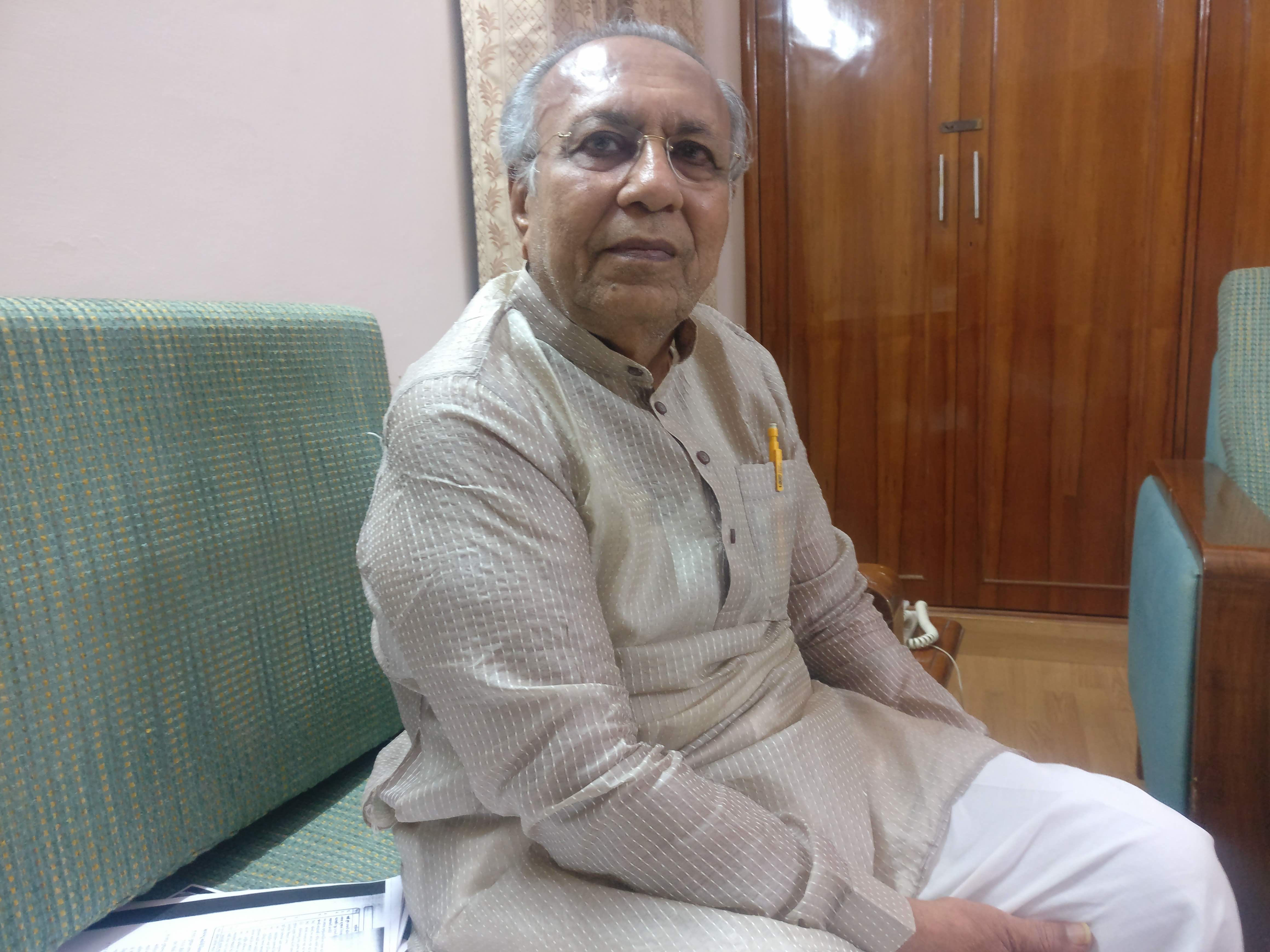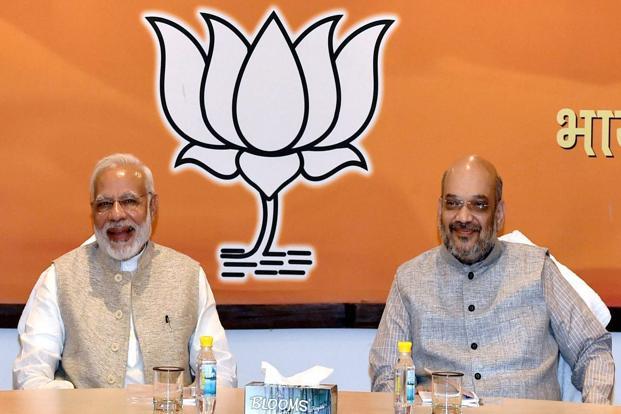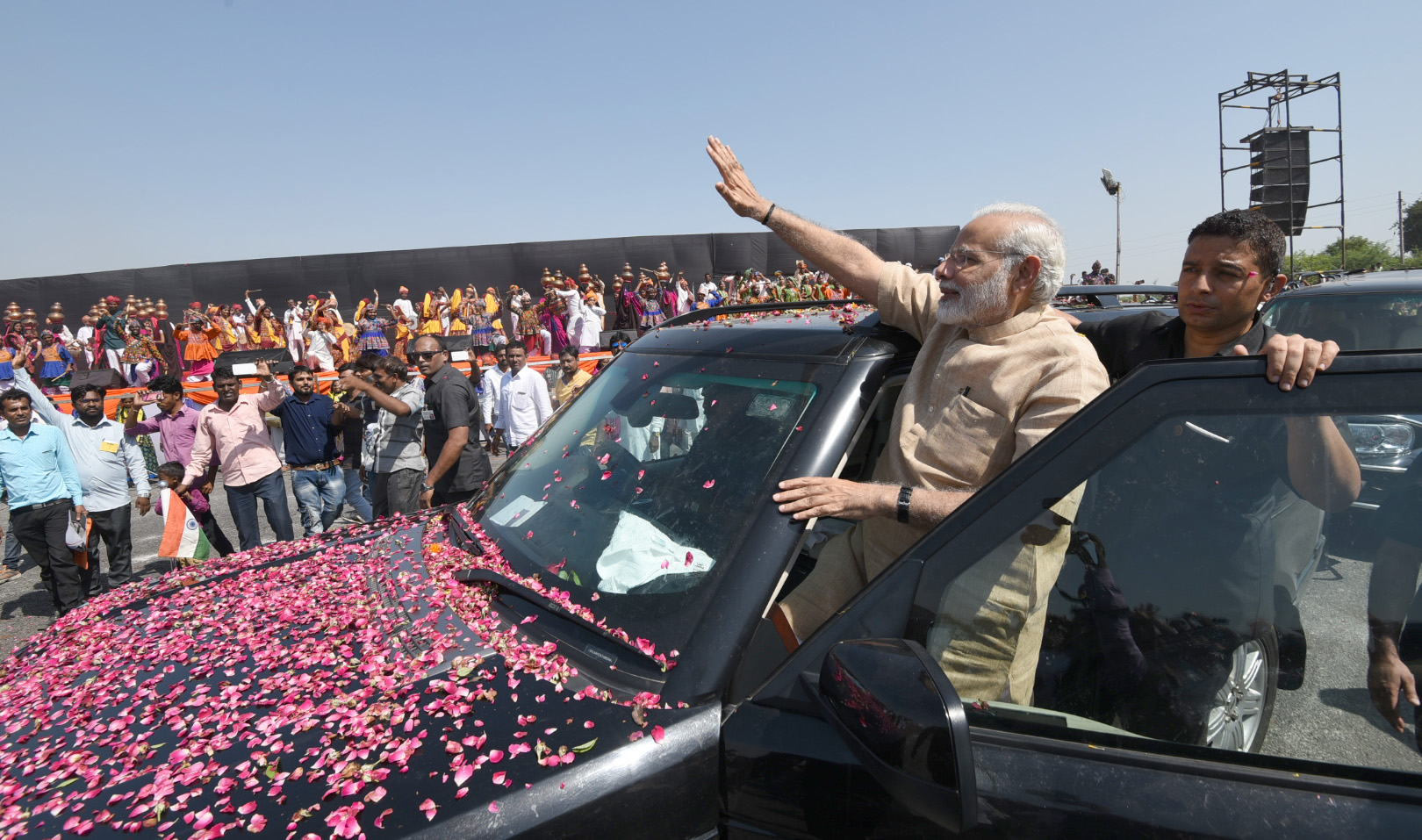Suresh Mehta, who quit the BJP in 2007, argues that successive governments in Gujarat have pushed the state towards becoming permanently trapped in debt.

Suresh Mehta. Credit: Ajoy Ashirwad Mahaprashasta
New Delhi: Even as the BJP is gearing up to use the ‘Gujarat model of development’ in the upcoming assembly elections in Gujarat and Himachal Pradesh as its USP, former BJP chief minister of the state Suresh Mehta, who has had a long-standing political career there ending in 2002, has come down heavily on its industrial model. In an interview with The Wire, he listed the failures of successive Gujarat governments over the past decade. Citing the government’s own data, he also questioned the priorities of the Gujarat model, which he says favours only the rich.
Excerpts from the interview:
The next assembly election in Gujarat is around the corner. How do you assess the political situation at the moment?
The traders were the most crucial vote bank for the BJP. But after (the implementation of the) GST (Goods and Services Tax), this whole base has shifted to the other side. The peculiarity of this Gujarat election is the growing disillusionment with the BJP, and this has made the political ground a little favourable for the Congress. If the Congress wins, it will be because of negative votes against the BJP, not for any love for the party. Congress’s biggest challenge will be to convert this anti-incumbency factor into an electoral advantage.
Until now, the BJP has had easy victories because Congress, as the main opposition party, was nowhere close to it. But I see a level playing ground this time. What we have to understand is that the present Congress unit in Gujarat does not have any experience in administration, since the party has been out of power since the early 1990s. A whole generation has passed. The party unit, at present, is divided into small camps which are hostile to each other. If it is serious about winning, it has to come out of this mould.
The BJP is on the defensive at the moment, and much against its temperament, the Congress is on the aggressive side. The central leadership of the Congress, unlike previous years, appears to be directly supervising its state unit and also checking negative tendencies within it.
What do you think will be the dominant issues in the elections?
The BJP, at the moment, is an issueless party. After his election to the Rajya Sabha, Amit Shah made a statement on the floor of the house that the BJP is going to the elections on three issues: Narmada (Sardar Sarovar project, building of Vallabhbhai Patel’s statue), (Pradhan Mantri) Garib Kalyan Yojana and getting quotas for certain OBC groups, which have remained outside the ambit of the reservation policy.
On all three counts, their plan has backfired. The Narmada issue did not get much traction from the public. Two, even when all preparations were made by the Gujarat government to highlight Garib Kalyan, they understood that this may not work, so they cancelled the programme.
Similarly, the state government had also decided on the dates to announce quotas for certain sections, but that too was cancelled at the last moment.
So now they have jumped back to vikas because they have no other option. On vikas, they are on a very weak wicket.
Why do you say that?
I am saying that because selling the Gujarat model of development will not work in Gujarat this time.
Apart from being the chief minister of the state, you have also served as its finance and industries minister. You are being critical of the Gujarat model at a time when the BJP machinery has been quite upbeat about it.
The Gujarat model is nothing but a jugglery of words. The hard realities of Gujarat suggest otherwise.
In 2004, the CAG (comptroller and auditor general) examined Gujarat’s finances. At that time, the debt the state faced was somewhere in between Rs 4,000 and Rs 6,000 crore. Thus, it warned Gujarat to have some financial discipline to prevent the state from becoming a permanently debt-trapped state.
But the government ignored the CAG’s observations. In 2017, Gujarat’s debts have increased to Rs 1,98,000 crore, according to the latest budget document presented by the state government. These are not my figures. These are the government’s own numbers, which it declared in the Statement under the Gujarat Fiscal Responsibility Act, 2005 in February 2017.
Similarly, in the same document, one can analyse where the Gujarat government’s priorities lie. The agricultural subsidies that benefit the farmers have consistently declined since 2006-07. From Rs 195 crore in 2006-07 and Rs 408 crore in 2007-08, it has come down to only Rs 80 crore (revised estimates) in 2016-17.
Now compare this to subsidies given to the energy and petrochemicals sector, which are run by the Adanis and Ambanis. From Rs 1,873 crore in 2006-07, the subsidies to the sector have dramatically gone up to Rs 4,471 crore (revised estimates) in 2016-17.
Similarly, (the outlay for) food and civil supplies, which are essential for poor people, has come down from Rs 130 crore to Rs 52 crore in the same period.
How this government runs – as far as economy is concerned – is for everyone to see.
But there has been substantial industrial development during this period too.
When Narendra Modi was the chief minister of Gujarat, he initiated the Vibrant Gujarat summit every alternate year. The government had promised to generate employment for one crore youth every year. But the industrial development had hardly any effect on employment growth.
I will give you one example of how Gujarat has only favoured the capitalists. The Tata Nano project was brought to Gujarat on Modi’s invitation to the Tatas. The Tatas put a condition that only if the state government gives a loan will it bring the project to the state. The sarkar then opened its doors to incentivise the Nano project. It gave heavy tax relief, cheap land and power subsidies to the project. The Tatas had asked for Rs 33,000 crore as the loan amount. The government sanctioned Rs 11,000 crore at a zero interest rate, to be paid in equal instalments with a moratorium period of 20 years. The Tatas were also given permission to not abide by the state’s employment policy, which mandates that 85% of the workforce must be generated from the region where the factory was set up.
Despite this, the Nano bombed but the Tatas are enjoying the same incentives at the cost of public exchequer even now.

Prime Minister Narendra Modi and BJP president Amit Shah. Credit: PTI/Files
You are painting a very bleak picture. Are you saying that the big companies had it easy in the state without fulfilling their responsibility?
The tax revenue raised but not realised as on March 31, 2016 is a whopping Rs 25,866.78 crores, according to the government’s own declaration. This figure was around Rs 18,000 crore in the previous year. Every year, this figure grows by around 7,000-8,000 crore. This raises doubts on the intention of the state government. After all, what prevents it from collecting taxes which are due? This may also indicate corrupt practices in the government.
Do you see some nervousness among the BJP rank and file? The Union finance minister relaxed some norms on GST to benefit the traders.
Yes, they are definitely nervous. The relaxations you are talking about have no meaning – (it is) an eyewash. These are election gimmicks. Look at where they tried to relax some norms: textiles, diamonds, papad, khakhra and so on are all Gujarat-specific industries.
But I feel traders have already made up their mind. They are not happy.
Many reports also say that the RSS and its offshoot organisations have also launched a campaign against such policy measures of the BJP government at the Centre.
I have seen the RSS very closely through my career. Its criticisms are mere gimmicks. When it sees that elections are around the corner, it launches campaigns to protest against the BJP and gain the confidence of people who are victims of such policies. But as the election approaches, the RSS cadres, on various platforms, start saying that there is no point voting for the Congress candidate and provoke people communally. Then they urge people to give another chance to the BJP. Even their Swadeshi campaign is a part of that gimmick.
Coming back to Gujarat, the BJP government has always claimed that it has improved the lives of the poor. Any comments?
Let me give you two solid examples. In 2007, the year of elections in Gujarat, Modi as chief minister launched with much fanfare the Van Bandhu Kalyan Yojana with a declared motive of improving the lives of Adivasis. He set aside Rs 15,000 crore for this scheme, which kicked off with ‘Har ek ko ghar, har ek ko arogya (A house for all, health for all)’. Along with this, he had promised to generate five lakh skilled jobs for Adivasis and construct all-weather roads in Adivasi-dominant areas.
According to the government’s own data, not even 5% of this has been achieved.
Similarly, on July 6, 2007, Modi launched yet another scheme called Sagar Khedu Sarvangi Yojana for the development of coastal areas. Rs 11,000 crore was allotted for 60 lakh people who live in 300 villages and 38 talukas that covered 1,600 km of the state’s coastal belt.
Modi had said that the children of the coastal belt are so talented that he would open a training college for them so that they can be inducted into the Indian Navy.
Also read: Economic Crisis Intensifying, BJP Will Be Held to Account in 2019, Says Yashwant Sinha
But what happened to the scheme? The government itself had an answer. On March 21, 2012, the government replied to an unstarred question on the floor of the assembly that not even a single child has been trained and recruited to the navy from the coastal belt.
Under the same scheme, Modi had said that each of these 300 villages will have an RO plant to tackle the problem of saline water in the area. You can go to these villages. Not even a single one had any such plant. The result is a big zero.
My question is, where has all this money gone?
Take another example, which will be more relevant at the moment. Modi announced that the Statue of Unity (Sardar Vallabhbhai Patel’s statue at the Sardar Sarovar Dam) will be the biggest statue in the world but had also said that the public exchequer will not be burdened with this. Instead, he said he will get funds from people. But the funds ceased after a point.
The finance minister of Gujarat now has stated on the floor of the house that Rs 3,000 crore has been drawn from the Narmada project funds in the last three years to build the statue. How can the government divert funds meant for irrigation and farmers towards this? I simply do not understand.

Prime Minister Narendra Modi greeting people in Vadnagar, Gujarat on October 08, 2017. Credit: PIB
What has been the impact of this failure to deliver?
There is a deep sense of anguish among people. We have seen the Patidar and Dalit agitations. To tackle this, the BJP has tried to divide the Patidars. It has encouraged different factions within Patidars to form their own parties. It got around four or five parties, dominated by Patels, registered. As a result, while rural Patels may go against the BJP, city-based rich Patels, especially in Surat, are still thinking about whether to take a stand against the party or not.
Are you planning to take up these issues in Gujarat?
Yes. As a citizen, it is my duty to protect democracy. Today, there is anger in society because of such policies. Some of us have formed a front called Lokshahi Bachao Abhiyan. And we will be asking the government these questions.
Modi has turned the slogan ‘vibrant Gujarat’ into propaganda. With mounting debts and the lack of clear-cut policies, the state has only slumped under Modi and chief ministers after him.
You too served as a minister under Modi in Gujarat. You resigned from the cabinet after the 2002 Gujarat riots and finally left the BJP in 2007. What made you leave the party totally?
See, the way the party functioned under Modi was completely different from before. The party became authoritarian. I left in 2007 but my differences with Modi started in 2002, I had an argument with him when he decided to pay his tribute to the victims of the Godhra train burning incident but not to those who were killed subsequently across the state. He in fact went a step ahead and stopped the assembly for a day to mark his respects for the Godhra victims.
I told him that as the chief minister of the state, he can’t make such selective decisions.
Do you think he is directly or indirectly responsible for the anti-Muslim riots in 2002?
Directly or indirectly, I do not know. I can only tell you my observations.
On February 27, 2002, the day of the Godhra incident, I met Bhupendra Sinh Solanki, the BJP MP from Godhra. He told me that Modi has called him immediately. Modi had just won his seat by a very narrow margin and the BJP had lost two out three seats in the recent by-polls.
Solanki told me that Modi told him that he will not serve him tea that day and asked him to report to his constituency immediately. Solanki told me that Ashok Bhatt (another BJP leader) will reach Godhra soon.
It was a day when the assembly had to meet. As I saw Ashok Bhatt, I accompanied him to Modi’s office. On seeing me, he was furious and asked me to leave.
In a few hours, I started getting reports from BJP workers who told me about the Godhra incident.
As the chairman of the state’s dairy co-operative, I went there and instructed the collector, Jayanti Ravi, to ensure that milk is provided to all the survivors. Soon, I saw Ashok Bhatt come with a media crew and make a statement that it is a “communal” incident. The collector repeated the same statement.
All of a sudden, Modi came in a helicopter, visited the burnt compartment of the Sabarmati express and made a statement that this was a “pre-planned terrorist act”. He wanted to aggravate the situation. Or else how could he determine the nature of the accident within two minutes of his visit, without consulting anyone more competent than him.
The next day, he organised the shradhanjali (tribute) programme and the riots followed.
Note: This copy has been edited as former Gujarat chief minister Suresh Mehta’s name was incorrectly written as Suresh Patel in a previous version.

Comments are closed.